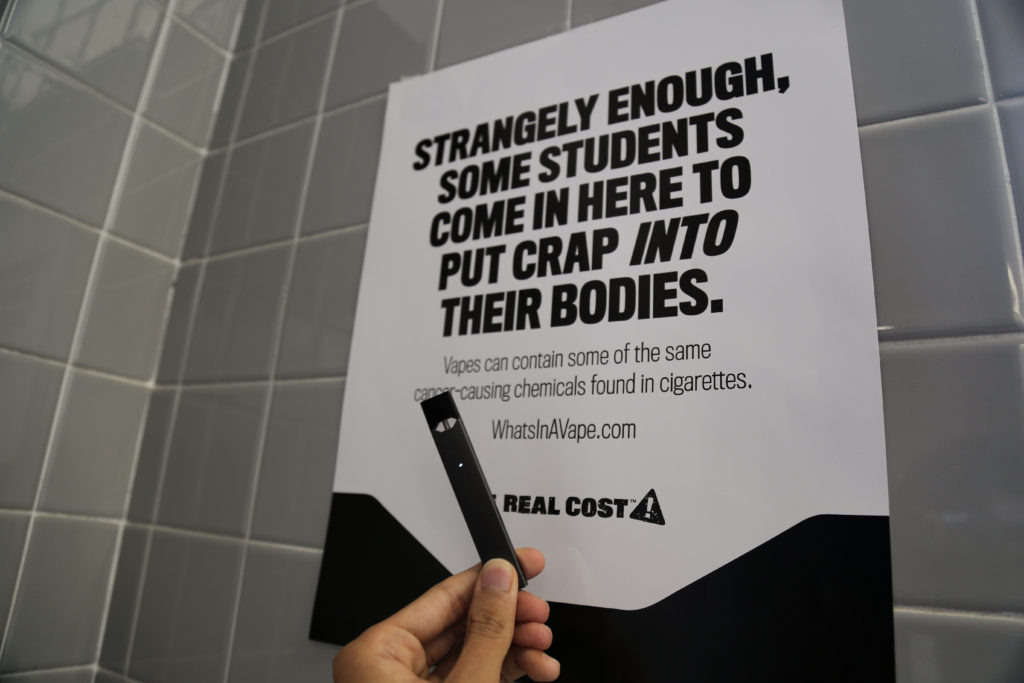
A ban on all flavored e-cigarettes was recently passed by the New York City Council on Thursday, November 21. Similar bans are taking place all over the nation amidst escalating concerns regarding vaping’s health ramifications. This ban extends to all types of flavored e-cigarettes and e-liquid vaping products. The most alarming part of the vaping epidemic is its main target: young people.
Students can be seen vaping in buses and the subway, as this trend has taken to the liking of many teenagers, including some Townsend Harris students.
The most prominent e-cigarette producer, JUUL, provides flavors ranging from mango and other fruity flavors to cool mint, working to entice the younger demographic. This seems to be a flattering alternative to conventional cigarettes, providing variety and a more appealing scent. The company also provides a “Juul Calculator” to estimate the money saved by using Juuls instead of cigarettes. The e-cigarette is also small and slender, making it an easy device to handle and hide if necessary. This caused a surge in popularity, as the masses familiarize themselves with the product.
However, Health and Physical Education teacher Matt Lemanczyk explained that the teenage brain is still developing into the early 20’s, meaning the adolescent brain is more susceptible to an addictive substance in comparison to an adult. By getting kids addicted to e-cigarettes that contain nicotine, companies such as JUUL, he said, will “have a customer for life.”
As of late, many kids who vape have acquired a disease called popcorn lung, or bronchiolitis obliterans. This condition was first documented in 2000 when microwave popcorn factory workers were exposed to the flavoring chemical diacetyl. According to Gizmodo, a Canadian teenager has contracted this disease after vaping for a series of months, making this the first case that directly correlates popcorn lung and chronic lung disease to e-cigarettes due to the inhalation of diacetyl of flavoured vaping liquids.
“High school students that vape now are basically test subjects to see the long term effects of vaping,” said Mr. Lemanczyk.
Sophomore Sai Choudari stated, “It seems to me that this is just a cycle – people see a new trendy or popular item and are oblivious to its impact or collateral damage. Then it happens again and again with no regard to pass occurrences.”
Sophomore Kaitlyn Chung shared similar sentiments, stating, “Students should be conscientious of their actions and decisions. People lack the ability to reflect on the past and when they see their error in judgement it is then too late.”
Schools and parents are starting to take heed of the detrimental effects vaping is having upon kids. Therefore, precautionary and remedial measures are being implemented in response to vaping’s hold on the teens of America. One such measure is to install vaping detectors in school bathrooms and locker rooms to prevent students from using these products. Increasing awareness of the product is spurring a ban on these flavors altogether and increasing the age at which it is legal to buy an e-cigarette.



























